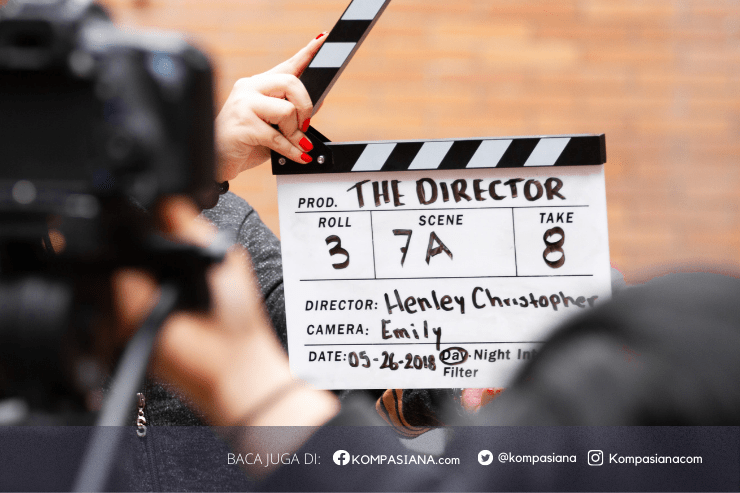History is something that will never disappear from human civilization. In assembling a vision and mission towards the future, we must not ignore history, but on the contrary, history must exist in every modern human being. However, now there are many young people who do not understand history . How will this country progress if its young people don't even understand the history of their own nation. Through the documentary film "Indonesian Calling", it is hoped that it will be able to broaden the horizons of young people, the golden generation of the nation's future, to be able to know historical stories in ancient times.
Indonesia Calling is a documentary film set after World War II. This film tells the spirit of the workers who experienced bitter times in 1946. This film is also evidence of the workers' struggle in fighting for the independence of the Unitary State of the Republic of Indonesia. At the start of the video, It was seen that a number of 1400 Indonesian workers left Australia with the Esperance bay boats to Java, where they promised not to land in ports controlled by the Dutch, Australia also sent its government officials to ensure this guarantee. Before setting sail, Ev Elliot, as the federal secretary of the Australian Seafarers' Union, gave a flag to representatives of Indonesian workers to bring back to Indonesia as well as a sign of a declaration of support for Indonesian independence. But strangely, we never thought how the builders could get to Australia even though at that time the Indonesia were under pressure? If we examine it more deeply , it turns out that the workers in the video are not ordinary workers , they are young activists who fled from Dutch exile and then expanded to Australia to fight for Indonesian independence .
After this incident, a new question arose, why did they have to go to Australia? Are there no other countries? This was due to the territorial distance and kinship relations between Indonesia and Australia which were very well established, especially at the time of the Renville Agreement, in which Australia played a large role in the Indonesian-Dutch conflict. We can also see the Indonesian-Australian kinship relationship through the scenes in this video, where Australia knows Indonesian culture and folk songs and Indonesian people mingle with each other and even marry Australians.
Long story short, there is a radio voice proclaiming Indonesia's independence, this is the starting point of Indonesia's superiority as an independent nation, freedom of opinion, freedom of association, and freedom of democracy. Furthermore, precisely on Sydney street, Indonesian youths again echoed the Youth Pledge, an oath of allegiance to the new republic, Indonesia. They are ready to sacrifice their body and soul for Indonesian independence. In the evening, they celebrated the victory, where there were dance performances named the knights and royal princesses dance accompanied by the sound of gamelan music. The existence of these shows shows that workers from the class of musicians, even though they were in exile and then expanded to Australia, they did not stop to maintain Indonesian ancestral culture.
However , some time after the announcement of Indonesian independence . The Dutch wanted to control Indonesia again because of the country's enormous wealth. In Australia there were many Dutch ships ready to take back Indonesia's wealth, such as rubber and tin, besides being ready to transport their agricultural products they were also ready to transport soldiers and weapons in preparation for recapturing Indonesia. The Indonesian sailors refused this, they left the ship in droves and left the Port offices as an act of rejection of this. The sailors also told their grievances when they were colonized by the Dutch where wages were low and sailors were not allowed to form an association which was very contrary to the contents of the Atlantic charter which supports freedom for all nations.
The Dutch, who really wanted to control Indonesia again, made plans to send a ship filled with medicines and food, but in fact the ship was filled with ammunition and weapons. The plan was thwarted by Australian sailors who supported Indonesia's independence. Furthermore , it did not stop there , they also sent a ship containing 1600 soldiers to be sent to Indonesia . Australian sailors warned the Dutch to stop doing that. But the Dutch soldiers heeded the orders of the Australian sailors . This made the Australian sailors and workers angry and decided to go on strike to transport the cargo of Dutch ships, strike to paint Dutch ships and disobey rules that made Dutch ships unable to sail or often termed black tires. This action was supported by all levels of society in other countries such as India and China who opposed the Dutch action.
After the action taken by civil society , it is time for government leaders who support the principles of the Atlantic charter to step in . They pressed to protest against the use of armed forces to suppress the Indonesian nation which was inconsistent with the Atlantic charter. Jan Wilanda at a meeting in the domain expressed his gratitude to the Australian side for their assistance in detaining Dutch ships that wanted to transport weapons and troops to Indonesia. However, one day at the port office, the employees were checking the black list of existing ships, it turned out that there was one ship that had not been blacklisted, namely the swarten ship with an Indian crew. The Dutch managed to sail on a ship with an Indian crew. With alacrity the sea guard tried to stop the ship by giving a warning which finally paid off. The Dutch ship was successfully thwarted.
Furthermore, at the end of the video, the secretary general of the waterside workers' federation said that they would try to destroy the efforts of Dutch imperialism in the Pacific region which are inconsistent with the values of the Atlantic charter. One sentence that often becomes the prima donna of every Australian word is “. because of their struggle our struggle, their victory our victory ". This is the struggle of the people of Indonesia, Australia and allied countries against Dutch colonialism. And the end of this video is exactly what was expected, Indonesia was freed from the influence of Dutch imperialism as a result of the cooperation of 5 allied countries which opposed Dutch colonialism because it was not in accordance with the contents of the Atlantic charter. and now this young country has grown into a developing country which will transform into a developed country in the future.
Follow Instagram @kompasianacom juga Tiktok @kompasiana biar nggak ketinggalan event seru komunitas dan tips dapat cuan dari Kompasiana. Baca juga cerita inspiratif langsung dari smartphone kamu dengan bergabung di WhatsApp Channel Kompasiana di SINI







